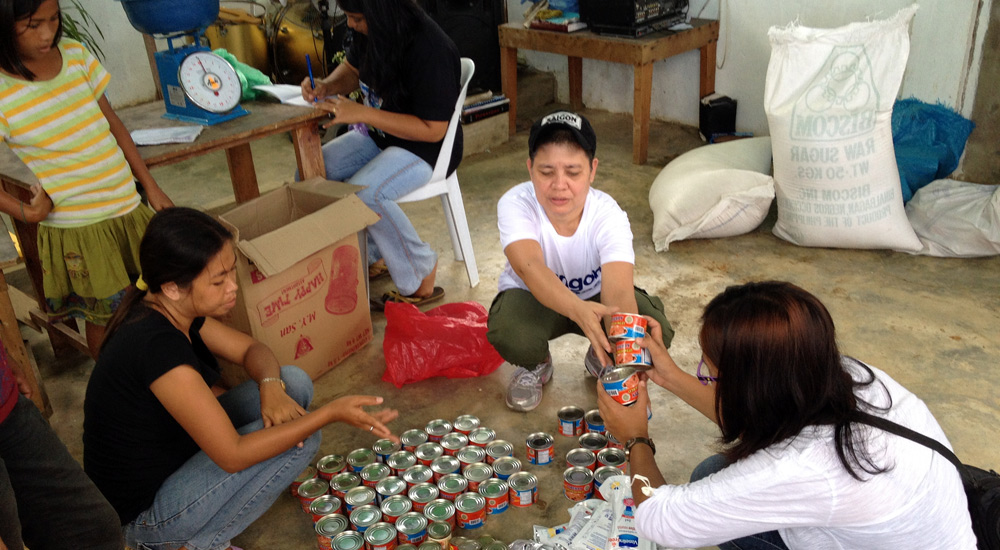More food aid needed for ‘Yolanda’ victims

Volunteers pack relief goods donated from Kodiak, Alaska, to be distributed to Supertyphoon “Yolanda” victims in Isabel, Leyte. As heavy rains hamper activities to help victims of Yolanda, the need for food aid might extend until the next rice planting season in May, according to the UN Office for the Coordination of Humanitarian Affairs. AP PHOTO/KODIAK FILIPINO BIBLE CHURCH, REMIGIO BELEN JR.
MANILA, Philippines—As heavy rains hamper activities to help victims of Supertyphoon “Yolanda,” the need for food aid might extend until the next rice planting season in May, according to the UN Office for the Coordination of Humanitarian Affairs (OCHA).
In its latest update on the situation in the Visayas, the UN OCHA said the food aid is most needed in remote inland and highland areas where some affected farmers have not yet received help.
“Affected people in underserved areas sometimes need to walk half a day to access assistance,” the agency said.
“Food partners are gearing up medium- to long-term recovery interventions,” it added. “They are supporting livelihoods through cash programs and alternative livelihoods strategies, such as vegetable, pig and poultry farming.”
Fishermen, coco farmers
Further, the UN OCHA cited initial data that suggests fishermen and coconut farmers still need to be helped sufficiently and that UN partners are jointly developing comprehensive strategies for these people.
The agency added that since response efforts began, the World Food Programme has given out 17,800 tons of food for more than 2.7 million affected people as well as cash to some 194,000 others.
The United Nations has so far raised $328 million, or 42 percent, of its target of $788 million to fund its Yolanda strategic response plan (SRP).
However, an additional $281 million was also made available through other response efforts that the United Nations is coordinating.
Under the SRP, $185 million is earmarked for activities related to ensuring food security and addressing the needs of the agriculture sector. Of this amount, $103 million, or 55 percent, has been made available.
Upland agroforestry
As part of the SRP appeal, the UN Food and Agriculture Organization (FAO) is asking for $38 million. Part of this is $2 million that would used in the rehabilitation of upland, agroforestry areas.
According to the FAO’s Philippine office, this part of the plan is designed to benefit 18,000 households.
The funding is meant, first, to help the affected upland people to salvage and clear away whatever is still useful in the debris.
Based on the FAO’s proposal, this will be done by providing cash for work and the tools—saws, portable mills and other basic equipment, as well as training—needed to process fruit trees and timber trees, with the wood salvaged for fuel and charcoal-making.
The FAO also proposes that the agroforests be rehabilitated through the intercropping of quick-return food and cash crops with tree seedlings. The seedlings are to be produced in community-based nurseries that would engage mostly women.
RELATED STORIES:
1,000 sacks of rice for students in ‘Yolanda’-hit areas